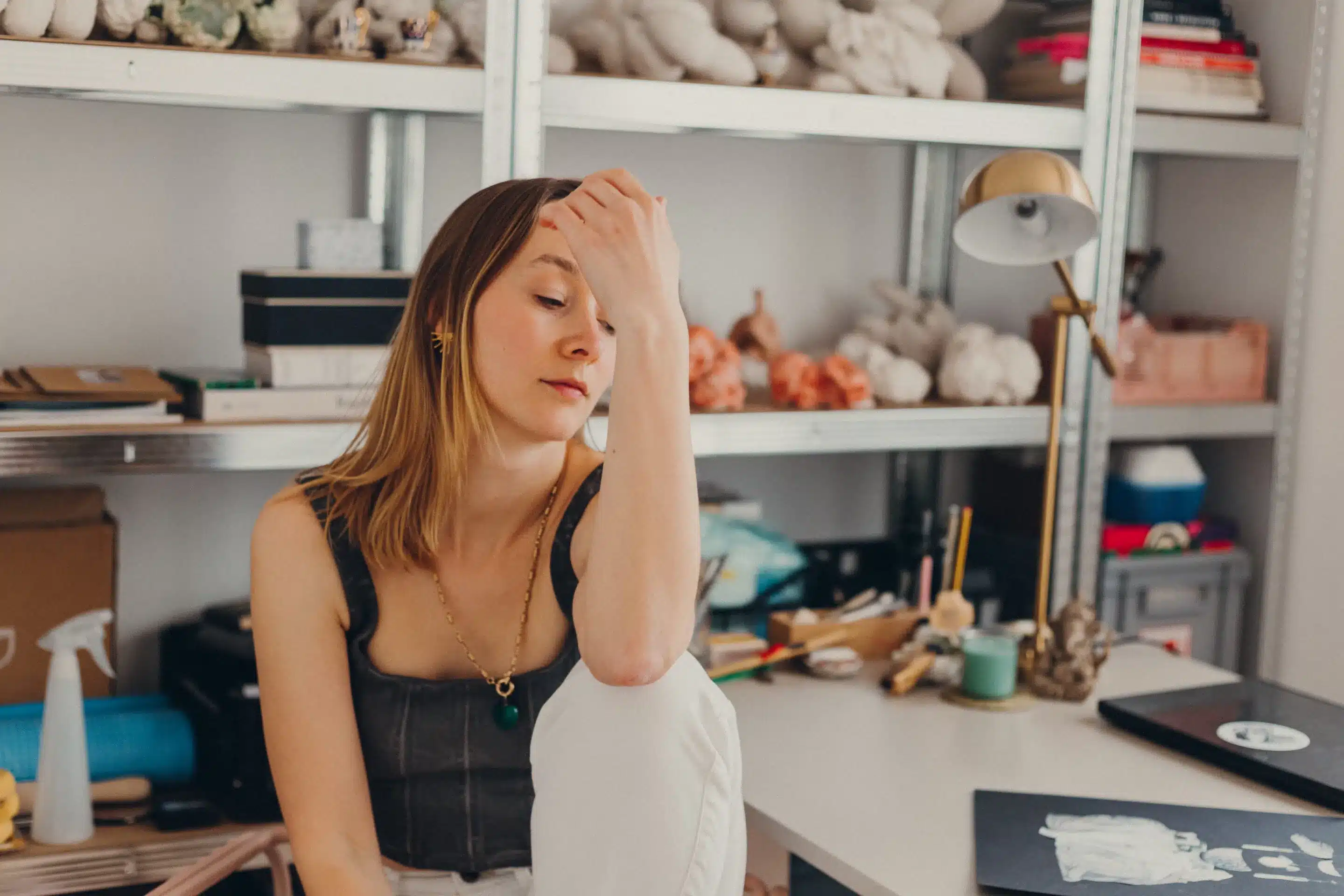ART
Petrified Perfection: Kristina Okan’s Exploration of Natural Decay
Images
Marcos Rodriguez Velo
Writer
Yana Karnaukhova
Kristina Okan, a visual artist born in Russia and now living in Spain. Kristina’s porcelain sculptures explore the beauty and fragility of the natural world, focusing on the transformation of matter over time.
Let’s dive into Kristina Okan’s artistic journey and creative inspirations.
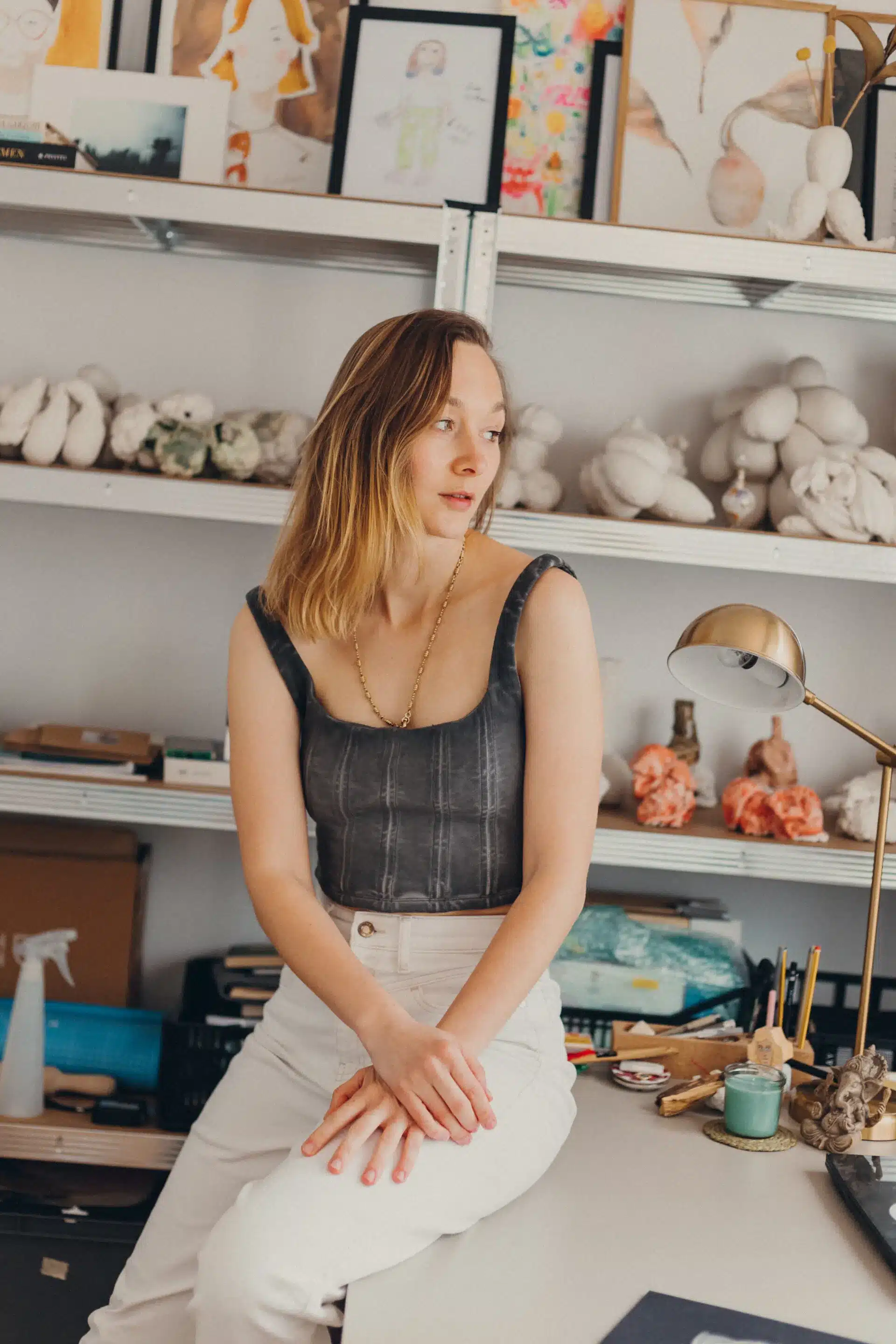
Yana Karnaukhova: Kristina, can you share with us what initially inspired you to pursue a career in the field of fine arts? Were there any special moments or experiences in your life that significantly influenced your decision?
Kristina Okan: Since childhood, I had no doubts that I would work in the artistic field. I was always interested in fashion, design, visual and applied arts, and when the time came to choose a profession, nothing other than an art university interested me.
“I find a lot of inspiration in the moment of natural forms wilting, their decomposition, and deformation.”
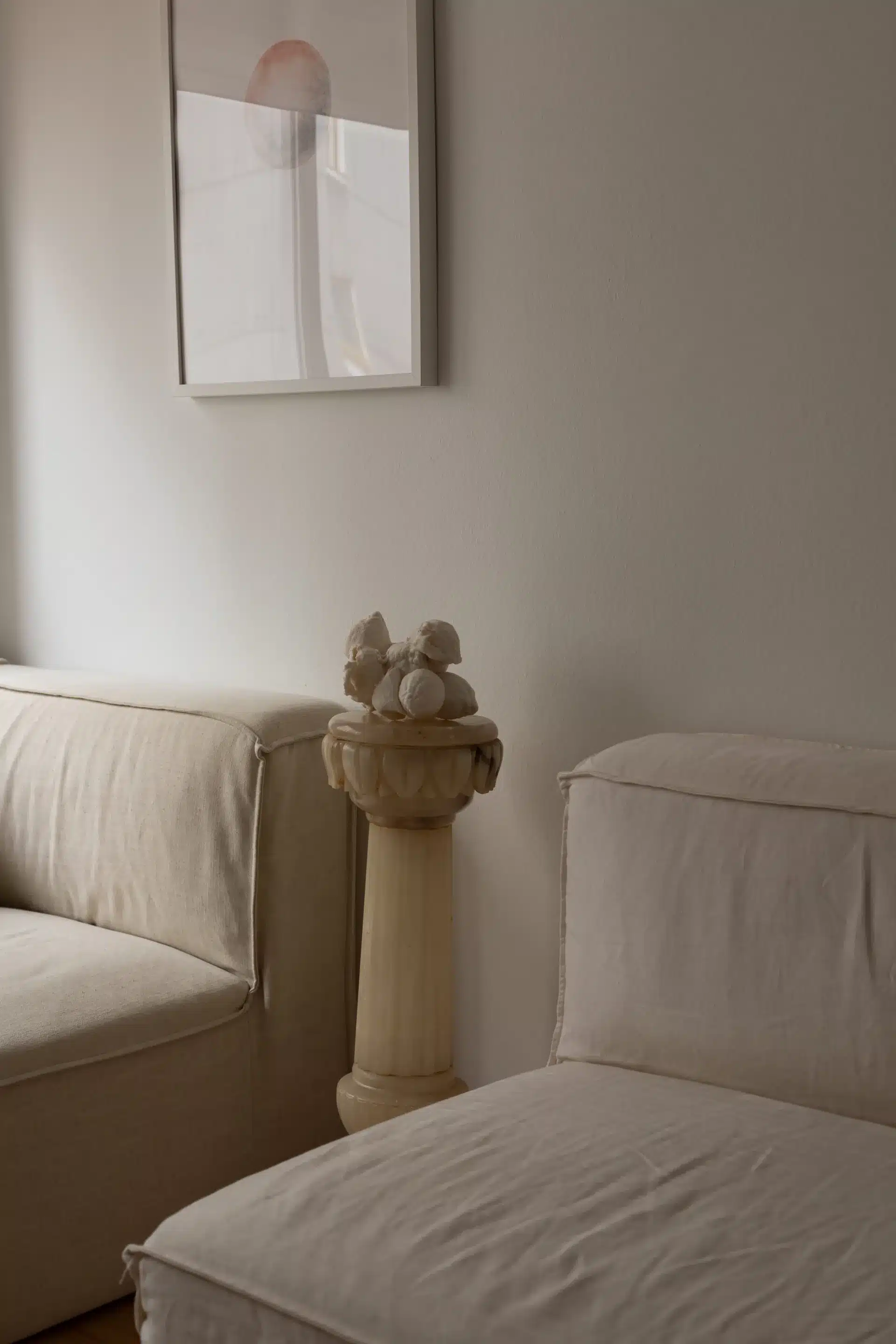
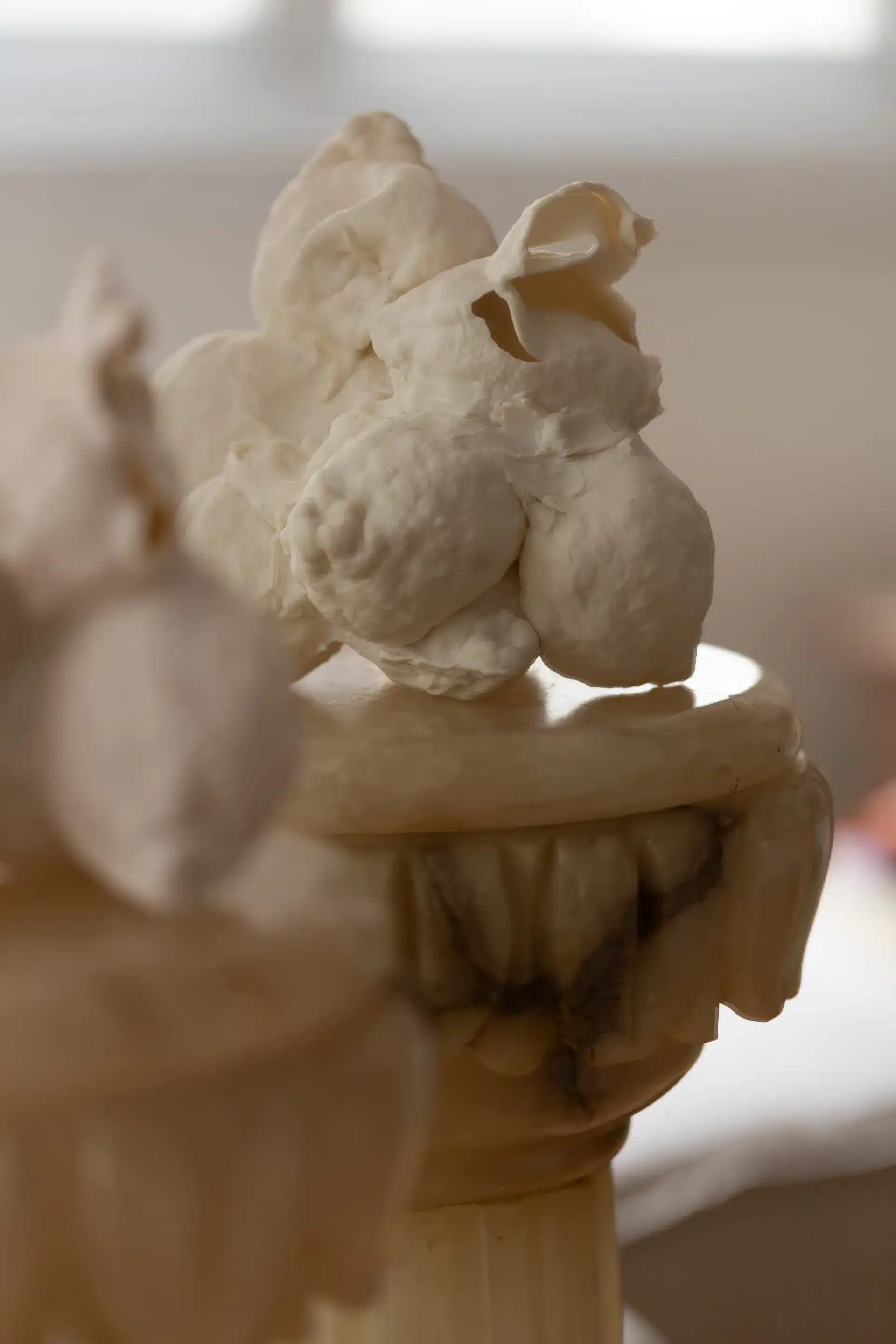

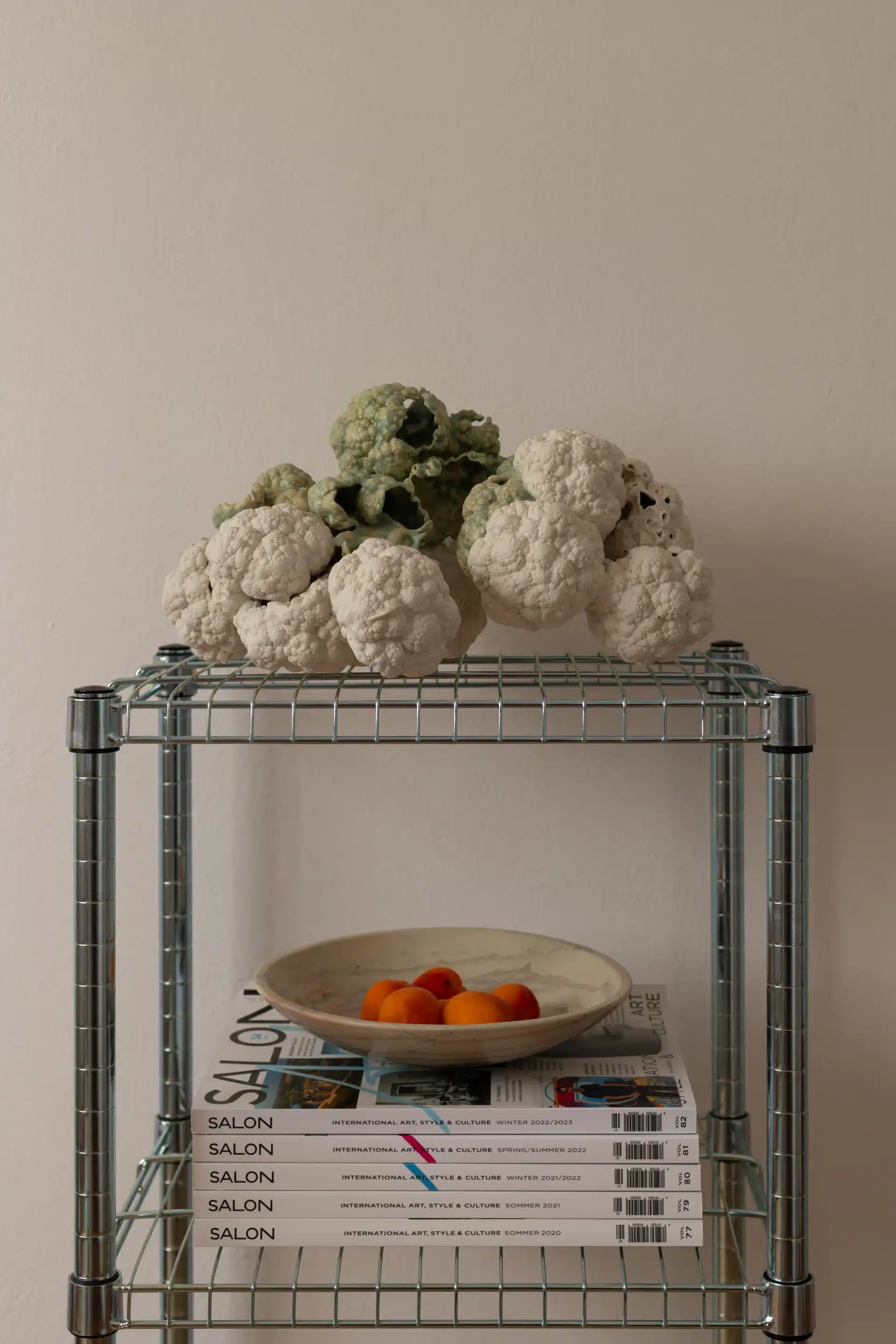
YK: You live and work in both Berlin and Moscow, how have these different cultural environments influenced your artistic practice and worldview?
KO: Besides these two cities, my life also includes La Coruña, where I currently live and work. These three cities are fundamentally different and have influenced me and my artistic practice in various ways. In Moscow, I received an academic education (at the Stroganov Moscow State University of Arts and Industry), which is my professional foundation. In Berlin, I essentially established myself as an independent artist, understanding the art world, galleries, and other institutions. Perhaps the most important thing for me is that, being in Berlin, I feel like I’m literally at the center of the world because there are so many opportunities, information, and people from different countries here. The geography of my exhibitions, biennials, and art fairs is quite broad and diverse thanks to Berlin. Now, I live in a small town in Spain, literally on the edge of the world, and this is a completely new experience for me as an artist, similar to detachment and rethinking. So far, I really enjoy this process.
YK: Your works perfectly reveal the fragile beauty of the natural world and the transformation of vital matter. What attracts you to the themes of decomposition and transformation and how do you embody these processes in your sculptures?
KO: I am fascinated by the diversity and range of the concept of beauty, both in nature and in life in general. I find a lot of inspiration in the moment of natural forms wilting, their decomposition, and deformation. It is romantic and slightly dramatic, and therefore incredibly beautiful. Capturing this process in porcelain — that is, in eternity — seems even more romantic to me.
YK: Your art challenges traditional notions of beauty, especially its ephemeral and deified aspects. How do you challenge these concepts in your work and what new understanding of beauty do you hope to convey to your audience?
KO: It seems to me that today, in a world overflowing with information, content, consumption, and the race for achievements, we miss moments of true beauty, as if we lack the strength and time for it. And true beauty, for me, lies in tiny details, moments, shades, something inexplicable, and hence the notions of ephemerality and divinity in my works. To capture this, one needs to slow down and be attuned to this beauty, to notice and cultivate it. Then everyday life will consist mostly of such moments.
“It seems to me that today, in a world overflowing with information, content, consumption, and the race for achievements, we miss moments of true beauty, as if we lack the strength and time for it.”
YK: Can you explain how you manage to turn withering fruits and vegetables into miniature petrified sculptures? What materials and techniques do you use to achieve this transformation?
KO: All my sculptures are made of porcelain, which, due to its density, indeed resembles stone, while being fragile, thin, and resonant. For me, there is already a certain magic in this. The very process of porcelain casting, using plaster molds, is pure alchemy and meditation. Porcelain requires total immersion and concentration.
YK: Tell us about the stages of your manufacturing process, from the initial idea to the finished sculpture? How do you choose and prepare materials?
KO: First, I look for fruit and vegetable forms that seem interesting to me — I usually see elements of the composition in vegetable stalls and immediately buy these objects, with which I then work in plaster in the studio. Making plaster molds is quite a laborious process, both physically and mentally, because even the slightest mistake can make all the work in vain. When my objects are molded and the molds are ready for casting, the most interesting part begins. I never have exact sketches because in that case, the process turns into “fitting” to a picture, and I am fascinated by the uncertainty and element of chance: one press can set the tone for the entire work and dictate the direction it will go. At the same time, I always initially keep the general idea of the composition in mind. When the composition is formed, the first firing occurs. Most of my sculptures are left unglazed or with minimal color. Then the second firing occurs, and after this, the work is considered finished. As a rule, I create 2 or 3 works simultaneously.
YK: What part of your work involves experimenting with new materials or techniques? Can you give an example of how experiments led to a breakthrough in your art?
KO: I cannot say that I experiment a lot in my practice. I have found my method and material, which I enjoy both in the process and the result, and so far, I am satisfied with everything.


YK: Your work is often compared to the emotional expression of Louise Bourgeois and Eva Hesse. How does their influence manifest itself in your work and in what way do you think your approach and point of view differ markedly?
KO: I am primarily attracted to the atmosphere created by the objects of these two artists. Something strange, disturbing, yet very tactile and appealing. I see parallels precisely in this atmospheric quality.
YK: After receiving your master’s degree from the Stroganov Academy, you focused on rethinking the problem of time within the framework of the vanitas tradition. How do you embody the themes of transience and mortality of Dutch still lifes in your modern sculptures?
KO: Renaissance still lifes and Dutch masters’ still lifes have had a very strong influence on me. When you understand that there is nothing accidental in Renaissance still lifes or “for the beauty of the composition,” and everything carries meaning and symbolism, at that moment, all art is rethought. The language of still life is a whole system of signification, conveying a moral (usually religious or enlightening) to the viewer. After all, art never served an entertaining or purely aesthetic function. Through art, people understood the world, history, and the meanings of existence.
YK: How does the aesthetics of fragile decay help you convey deeper philosophical questions about life, death and transformation in your work?
KO: Like the traditions of vanitas painting, the aesthetics of so-called decay and decomposition help to realize that everything in this world is not eternal, ephemeral, fragile, and therefore valuable. At each stage, whether blooming or wilting, there is both beauty and imperfection, and even ugliness. Everything exists simultaneously.
YK: After you have exhibited your work in many European and Asian countries, how do different cultural audiences react to your art? Are there any noticeable differences in interpretation or evaluation?
KO: I cannot say that I have noticed any specific differences in perception depending on the country, rather on the institutions. Organizations specializing in porcelain treat the process of organizing exhibitions more reverently and professionally, considering all nuances. Such exhibitions differ in the quality of presentation, and accordingly, the public’s reaction is more lively. But I am interested in interacting with different audiences and participating in both narrowly focused exhibitions, like ceramics or porcelain biennials (which greatly enhance craftsmanship), and multidisciplinary group exhibitions, where context is important, and the commercial aspect comes into play.
YK: Can you tell us about any upcoming projects or areas that you are particularly concerned about? How do you imagine the development of your career in the future?
KO: Currently, one of my works is presented at an international exhibition in Guangzhou, China, “Atelier Blanc,” dedicated to UNESCO’s 50th anniversary and its heritage. At the same time, another group exhibition has just ended – a biennial in China, where my work was also presented. I am very interested in China and other Asian countries, especially Taiwan and Japan. I would like to continue developing in this direction, expanding the geography of projects and exhibitions in these countries.
